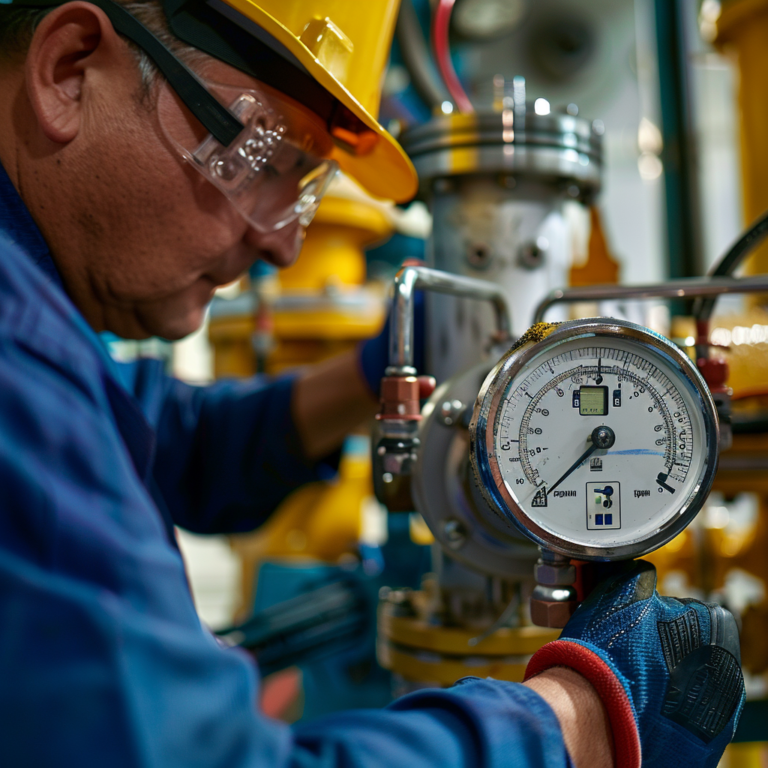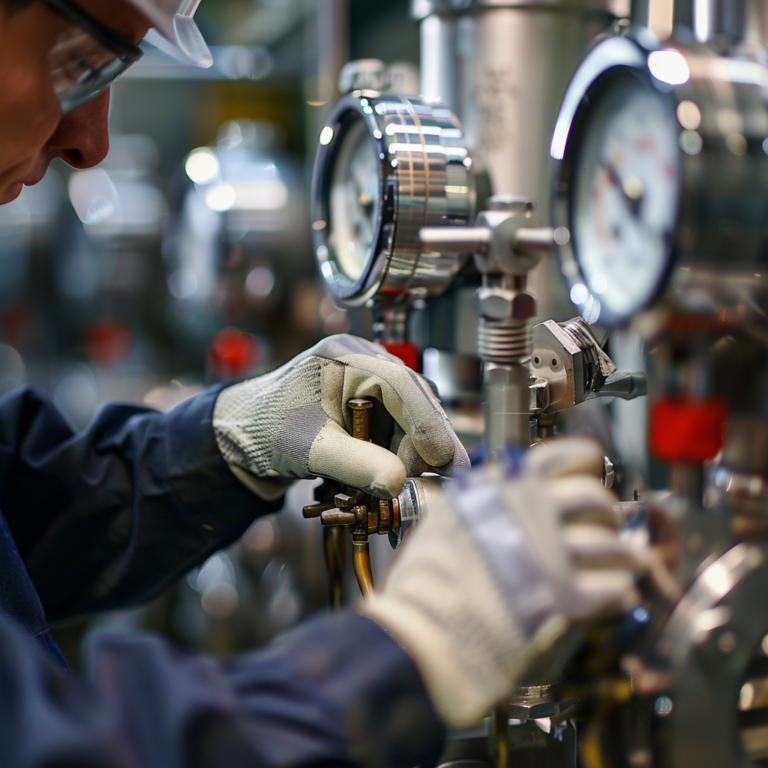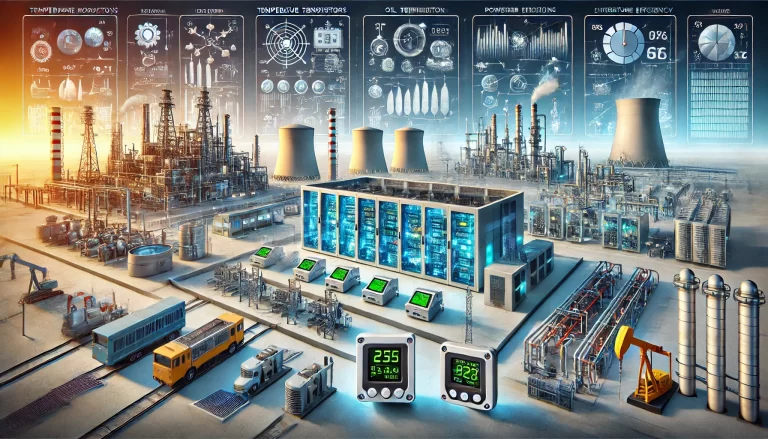Introduction
Process control instruments consist of three primary hardware components: the measurement and transmission unit, the actuator, and the controller. The measurement and transmission unit, commonly known as the transmitter, serves as the link between the sensor and the control system. In some cases, the transmitter and the sensor are integrated into a single device. Actuators, such as valves, execute control commands, while the controller (e.g., a PID controller) acts as the brain of the entire control system.
This article provides an in-depth look at one of the most critical components in digital instrumentation—the transmitter.
Functions of a Transmitter
In industrial production, measurement elements detect parameters such as pressure, temperature, flow rate, and liquid level. The transmitter converts these measurements into standardized signals, such as a 4-20 mA DC signal, which is then transmitted to display or control instruments for monitoring, recording, or regulation.
In essence, a transmitter serves two primary purposes:
Signal Conversion: Converts sensor signals into standardized electrical signals.
Signal Transmission: Ensures accurate and consistent data transmission to the control unit.

Importance of a Transmitter
As controllers are typically located in distant control rooms, the transmitter becomes a crucial component for generating and transmitting signals over long distances. It acts as the heart of the control system, linking the measurement point with the control point to create an integrated process control system.
Types of Transmitters
Transmitters can be classified based on various criteria, such as functionality and power source.
By Functionality:
Integrated Transmitters: These combine measurement and transmission functions into one unit (e.g., pressure transmitters).
Dedicated Transmitters: These serve only signal transmission purposes, relying on separate sensors for measurement (e.g., temperature transmitters).
By Power Source:
Pneumatic Transmitters: Use compressed air as a power source.
Electric Transmitters: Utilize electrical energy for signal processing and transmission.
Among these, differential pressure (DP) transmitters and temperature transmitters are the most commonly used in industrial applications.
Differential Pressure (DP) Transmitters: Types and Selection Criteria
A DP transmitter measures differential pressure, flow, and liquid level, converting these variables into standardized signals for display and control. The key types of DP transmitters include:
Force Balance Electric DP Transmitters
Capacitive DP Transmitters
Each manufacturer provides its own selection criteria, but key factors to consider when selecting a DP transmitter include:
Medium Characteristics: Consider the viscosity, crystallization tendency, and corrosiveness of the medium. For high-viscosity, crystallizing, or highly corrosive media, isolation-type transmitters should be used.
Material Compatibility: Ensure compatibility between the diaphragm material and the process medium (e.g., stainless steel 304, 316L, or tantalum diaphragms).
Temperature Considerations: For high-temperature applications (200°C-400°C), high-temperature transmitters should be used to prevent silicon oil vaporization and ensure accurate measurements.
Pressure Ratings: The transmitter’s pressure rating must match the operational environment.
Range Selection: The ideal operating range should be within 1/4 to 3/4 of the transmitter’s full scale for optimal accuracy.
Range Migration: For applications such as liquid level measurement, consider the need for range migration (positive or negative) based on installation conditions.

Key Considerations for DP Transmitter Installation
Proper installation of DP transmitters is crucial for accurate performance. Key considerations include:
When measuring gas pressure, place the pressure tap at the top of the pipeline and install the transmitter above the pipe to allow liquid drainage.
Install impulse lines in areas with minimal temperature fluctuations.
Avoid direct contact with corrosive or high-temperature media.
Prevent sediment buildup in impulse lines.
When measuring liquid pressure, position the pressure tap on the side of the pipeline to avoid sediment accumulation.
Use a condenser coil or similar device when measuring steam or other high-temperature media to prevent exceeding operating limits.
In freezing conditions, protect outdoor transmitters to prevent sensor damage due to frozen liquids.
Avoid fluid hammer effects that could damage the sensor when measuring liquid pressure.
Properly seal electrical cable connections to prevent moisture ingress.
Explosion-Proof Markings for Process Control Instruments
Many process control environments, such as petrochemical plants, contain flammable gases and dust. Instruments installed in such areas must have explosion-proof capabilities to prevent potential hazards. Explosion-proof instruments are certified with appropriate markings and classifications.
Typical explosion-proof markings include four segments:
Ex: Indicates explosion-proof certification.
Protection Type (A): Examples include “d” (flameproof), “ia” (intrinsically safe), “ib” (intrinsically safe under certain conditions).
Protection Level (B): Categories include Class I, IIA, IIB, IIC.
Temperature Classification (C): Designations range from T1 to T6, indicating the maximum surface temperature.
For example, an “Exdia IIC T6” marking indicates a device with both flameproof and intrinsically safe features, suitable for use in IIC-class hazardous areas with a temperature limit of T6.

Common Fault Diagnosis and Troubleshooting
Effective fault diagnosis is essential for maintaining transmitter performance. Common troubleshooting methods include:
Inspection Method: Check for signs such as sparks, smoke, odor, power fluctuations, lightning strikes, moisture, and misoperations.
Visual Inspection: Observe for physical damage, leaks, overheating, and power status.
Circuit Testing:
Open-Circuit Testing: Isolate suspected faulty sections to check if the issue disappears.
Short-Circuit Testing: Short-circuit relevant sections to verify the cause.
Component Replacement: Swap suspected faulty components to confirm issues.
Systematic Segmentation: Divide the circuit into power supply, signal transmission, and detection sections for stepwise troubleshooting.

Temperature Transmitters
Temperature transmitters work with thermocouples or resistance temperature detectors (RTDs) to convert temperature values into 0-10 mA or 4-20 mA signals.
Types of Temperature Transmitters:
DC Millivolt Transmitters
Resistance Temperature Transmitters
Thermocouple Transmitters
Temperature transmitters provide high reliability and stability by incorporating linear integrated circuits and explosion-proof designs for hazardous environments.
Conclusion
Transmitters play an indispensable role in process control systems, ensuring accurate measurement, efficient transmission, and reliable process control. Proper selection, installation, and maintenance of transmitters are crucial to achieving optimal system performance and safety.
